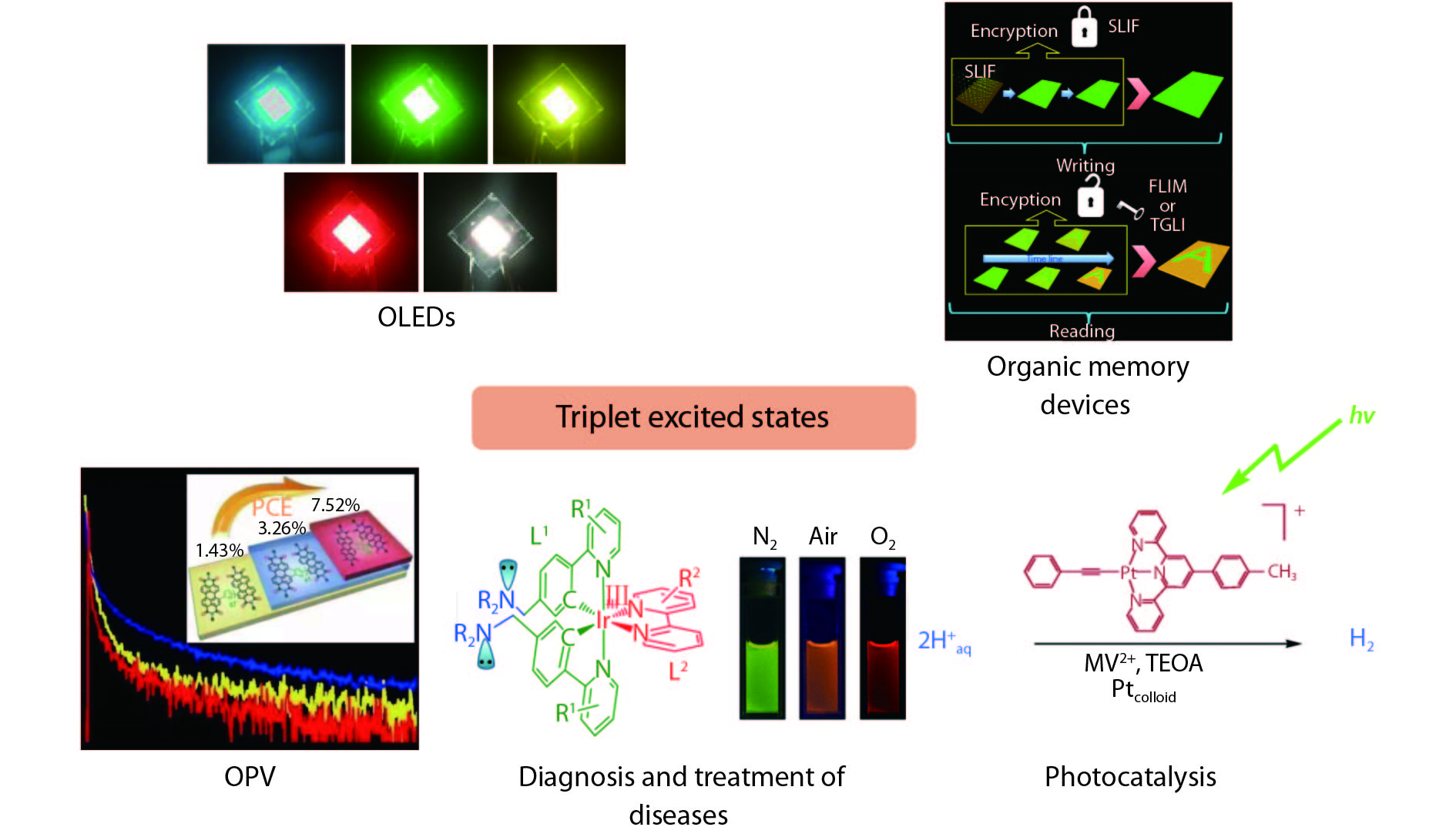| Citation: |
Song Guo, Shujuan Liu, Kenneth Yin Zhang, Wei Huang, Qiang Zhao. Utilization of triplet excited states in organic semiconductors[J]. Journal of Semiconductors, 2019, 40(7): 070402. doi: 10.1088/1674-4926/40/7/070402
****
S Guo, S J Liu, K Y Zhang, W Huang, Q Zhao, Utilization of triplet excited states in organic semiconductors[J]. J. Semicond., 2019, 40(7): 070402. doi: 10.1088/1674-4926/40/7/070402.
|
Utilization of triplet excited states in organic semiconductors
DOI: 10.1088/1674-4926/40/7/070402
More Information
-
References
[1] Ostroverkhova O. Organic optoelectronic materials: mechanisms and applications. Chem Rev, 2016, 116(22), 13279 doi: 10.1021/acs.chemrev.6b00127[2] Daskalakis K S, Maier S A, Murray R. Nonlinear interactions in an organic polariton condensate. Nat Mater, 2014, 13(3), 271 doi: 10.1038/nmat3874[3] Tao P, Li W L, Zhang J, et al. Facile synthesis of highly efficient lepidine-based phosphorescent iridium(III) complexes for yellow and white organic light-emitting diodes. Adv Funct Mater, 2016, 269(6), 881 doi: 10.1002/adfm.201503826[4] Miao Y Q, Tao P, Wang K X, et al. Highly efficient red and white organic light-emitting diodes with external quantum efficiency beyond 20% by employing pyridylimidazole-based metallophosphors. ACS Appl Mater Interfaces, 2017, 9(43), 37873 doi: 10.1021/acsami.7b10300[5] Tao P, Miao Y Q, Wang H, et al. High-performance organic electroluminescence: design from organic light-emitting materials to devices. Chem Rec, 2018, 18, 1 doi: 10.1002/tcr.201800139[6] Sun H B, Liu S J, Lin W P, et al. Smart responsive phosphorescent materials for data recording and security protection. Nat Commun, 2014, 5, 3601 doi: 10.1038/ncomms4601[7] Zhang K Y, Chen X J, Sun G L, et al. Utilization of electrochromically luminescent transition-metal complexes for erasable information recording and temperature-related information protection. Adv Mater, 2016, 28(33), 7137 doi: 10.1002/adma.201601978[8] Ma Y, Shen L, She P F, et al. Constructing multi-stimuli-responsive luminescent materials through outer sphere electron transfer in ion pairs. Adv Opt Mater, 2019, 7(8), 1801657 doi: 10.1002/adom.v7.8[9] Yang L, Gu W X, Lv L, et al. Triplet tellurophene-based acceptors for organic solar cells. Angew Chem Int Ed, 2018, 57(4), 1096 doi: 10.1002/anie.201712011[10] Zhang K Y, Gao P L, Sun G L, et al. Dual-phosphorescent iridium(III) complexes extending oxygen sensing from hypoxia to hyperoxia. J Am Chem Soc, 2018, 140(25), 7827 doi: 10.1021/jacs.8b02492[11] Feng Z Y, Tao P, Zou L, et al. Hyperbranched phosphorescent conjugated polymer dots with iridium(III) complex as the core for hypoxia imaging and photodynamic therapy. ACS Appl Mater Interfaces, 2017, 9(34), 28319 doi: 10.1021/acsami.7b09721[12] Jiang J Y, Qian Y Y, Xu Z H, et al. Enhancing singlet oxygen generation in semiconducting polymer nanoparticles through fluorescence resonance energy transfer for tumor treatment. Chem Sci, 2016, 10(19), 5085 doi: 10.1039/C8SC05501G[13] Huang T C, Zhao M L, Yu Q, et al. De novo design of polymeric carrier to photothermally release singlet oxygen for hypoxic tumor treatment. Research, 2019, 2019, 9269081 doi: 10.34133/2019/9269081[14] Brown G M, Brunschwing B S, Creutz C, et al. Homogeneous catalysis of the photoreduction of water by visible light mediation by a tris(2,2’-bipyridine)ruthenium(II)-cobalt(II)macrocycle system. J Am Chem Soc, 1979, 101(5), 1298 doi: 10.1021/ja00499a051[15] Du P W, Schneider J, Jarosz P, et al. Photocatalytic generation of hydrogen from water using a platinum(II) terpyridyl acetylide chromophore. J Am Chem Soc, 2006, 128(24), 7726 doi: 10.1021/ja0610683 -
Proportional views






 DownLoad:
DownLoad:














